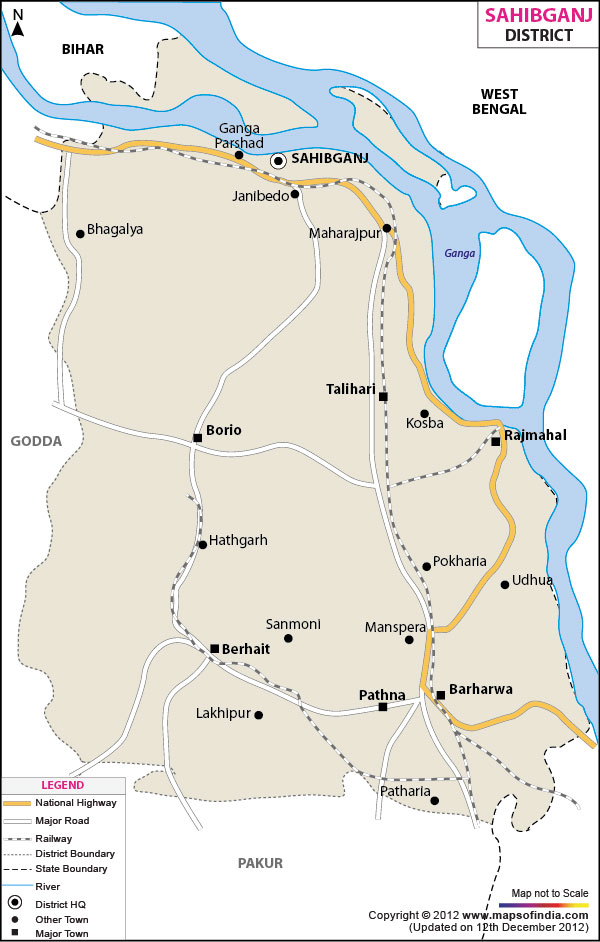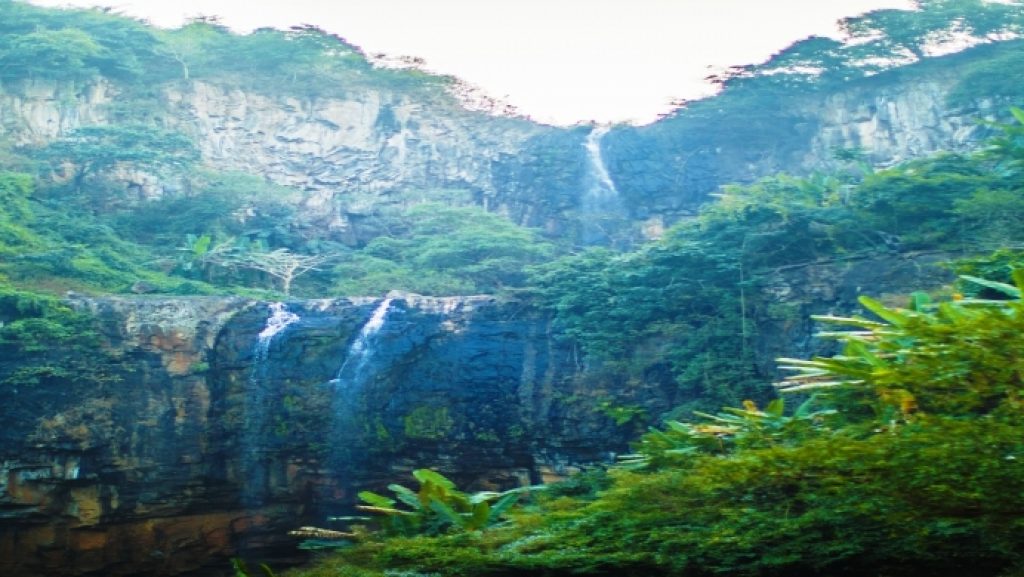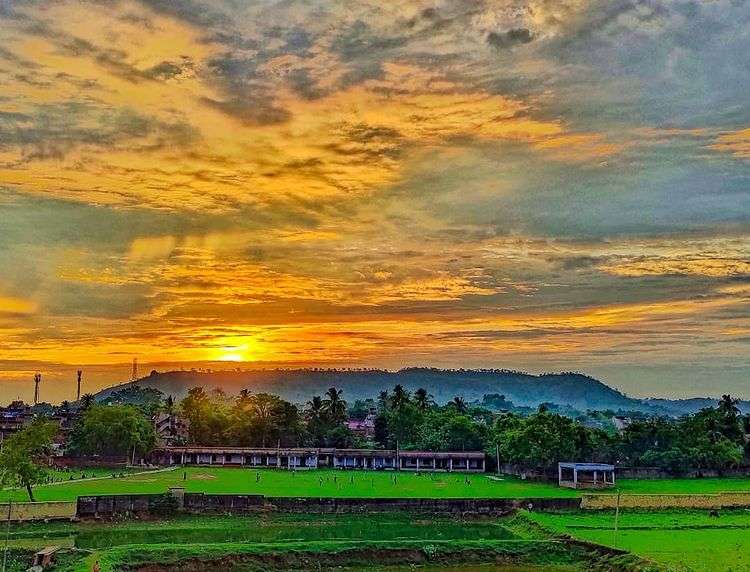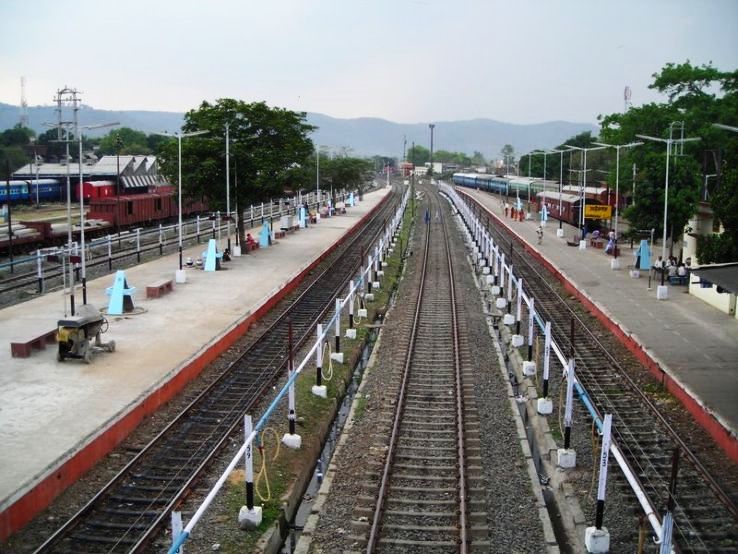Sahibganj, town and district headquarters in Jharkhand’s Santhal Pargana division, sits beautifully between the River Ganges to the north and the Rajmahal Hills to the south. It’s a mosaic of spiritual sanctuaries, tribal heritage, and colonial legacies, serving as a vital transit hub and cultural node.
Table of Contents
Historical Legacy
Sahibganj’s history traces from Mauryan era settlements to significant roles in medieval and Mughal politics—Teliagarhi Pass stood as the strategic gateway for armies since the 13th century. In the 16th century, Rajmahal near Sahibganj was appointed capital of Bengal by Raja Man Singh during Akbar’s reign.
Later, it became a junction for British trade, with the Sahibganj Loop railway (1866) and Bhagwa Kuan well (1915) as colonial relics.
Geography & Climate
Spanning 2,063 km² and housing over 1.15 million people at a 560/km² density, Sahibganj’s terrain blends Ganges’ river plains, Rajmahal’s green hills, and pockets of sal forests and springs—providing both aesthetic charm and ecological diversity.
Key Attractions
1 Rajmahal & Teliagarhi Fort
Rajmahal: Mughal-era capital ruins and historic bastions.
Teliagarhi Fort: 13th‑century entry point for early Muslim conquests; site of Sher Shah Suri vs. Humayun battle (1538).
2 Shivgadi Dham
Cave shrine with a dripping Shivling; pilgrimage hotspot in Shravan and Mahashivratri.
3 Bindudham (Binduwasini Temple)
Hilltop Durga Shakti temple; Navratri fair and panoramic Ganges views .
4 Akbari/Jama Masjid, Rajmahal
Built in 1592 under Akbar-era patronage; active site of congregation and community.
5 Moti Jharna Waterfall
A 50-60 ft cascade set in lush Rajmahal glens (~2 mi from Maharajpur); named ‘Pearl Stream’.
6 Udhwa Bird Sanctuary
Pataura Lake: winter wonderland for over 18,000 migratory birds from Europe and Siberia.
7 Bhagwa Kuan & Colonial Heritage
A 1915 well commemorating Edward VII; still in use.

Spiritual & Cultural Sites
Beyond mainstream stops, must-visit shrines include:
Maa Baisi Sthan (Gram Devi temple on the Ganga).
Shukravasini & Raksisthan Pahadi Devi Shrines.
Transportation & Access
Rail: Sahibganj Junction and Barharwa Junction link the region via the historic Sahibganj loop.
Road: NH80 connects to Pirpainti and Borio; Ganga facilitates boat transit.
Best Time to Visit: Oct–Mar offers mild weather and festival energy.
Local Life & Culture
Languages: Hindi, Urdu, Khortha, Bengali, Santali
Economy: agriculture (rice, pulses), growing trade via rail and river .
Tribal and colonial culture overlap, visible in local cuisine, markets, and community rituals.
Eco & Adventure Tourism
Rajmahal Hills: home to Jurassic fossil beds and scenic hikes.
Moti Jharna & Udhwa Sanctuary: provide natural retreats around water and greenery.

Where to Stay & Eat
Accommodation: modest lodges in Sahibganj town; few dharamshalas at spiritual centers.
Dining: local eateries near parks and marketplaces; enjoy tribal-influenced snacks and river-fresh fish.
Facilities: marketplaces, schools (e.g., Jawahar Navodaya), shops, restrooms are available near major sites.
Sample 3-Day Itinerary
| Day | Morning | Afternoon | Evening |
|---|---|---|---|
| 1 | Rajmahal Fort & Akbari Masjid | Udhwa Bird Sanctuary | Ganga Aarti at Sahibganj ghats |
| 2 | Shivgadi Dham | Moti Jharna trek | Village culture & market stroll |
| 3 | Bindudham Temple | Teliagarhi Fort | Colonial walk & Bhagwa Kuan visit |
Conservation & Sustainable Tourism
Key opportunities include:
Fossil protection in Rajmahal
Community-managed wildlife in Udhwa Sanctuary
Heritage conservation at Akbari Masjid, colonial structures, and hills
Promoting eco-paths, bird trails, and responsible pilgrim experiences
Conclusion
Sahibganj, perched at nature’s crossroads, is more than a transit town—it’s a spiritual, historical, and ecological tapestry. From fossil-strewn hills to ancient mosques, tribal shrines to waterfalls, it offers a journey of discovery and connection.
Pack your curiosity and pay attention to hidden corners—Sahibganj’s real beauty lies just beyond the obvious.













